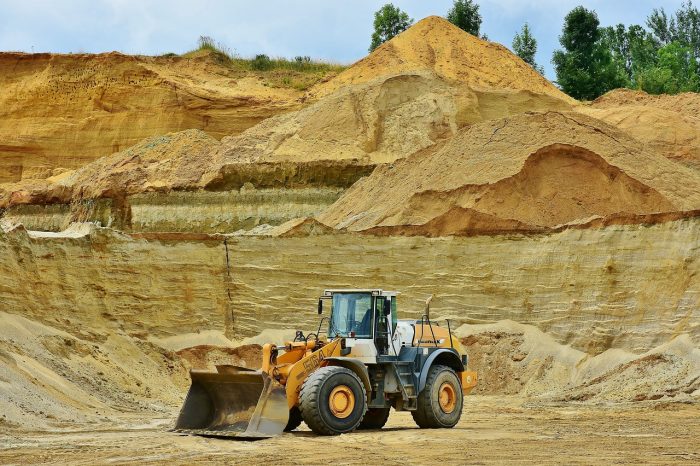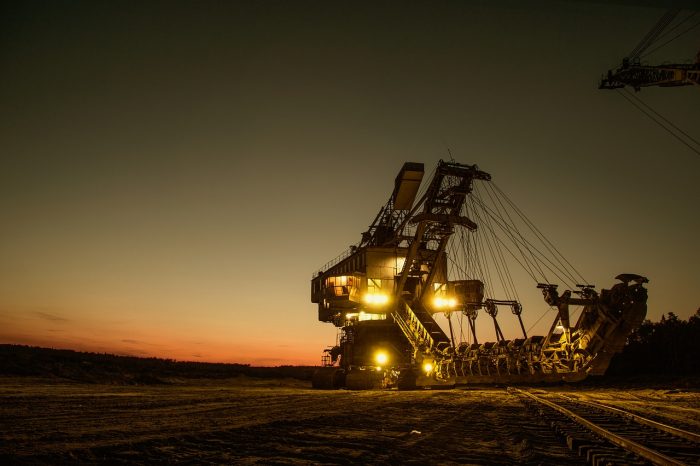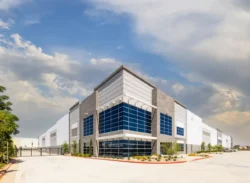How mining can impact commercial property investment
Published
March 12, 2019
Published
March 12, 2019

There are many drivers in commercial property investment. Economic growth, inflation, exchange rates and the official cash rate are just a few which can impact a savvy investor’s appetite for commercial real estate.
Another major influencer of commercial property investment in Australia – especially in the West – is what’s being pulled out of the ground. That’s right, when mining activity rises so can demand for commercial property.
Here we look at how commodities impact commercial real estate by looking at the relationship between Australia’s mining industry and various commercial asset classes – namely industrial, office and retail property.
Mining and commercial property
Between 2005 and 2012, Australia had its biggest mining boom since the nineteenth century goldrush. This prosperous period lifted household disposable income by 13 per cent, tripled the global price of Australia’s mining exports and increased investment by the mining sector from 2 to 8 per cent of GDP.
Iron ore and coal – two of Australia’s largest exports – were arguably the top commodities to fire the furnace of the boom period. When they came off the boil, LNG projects took up the slack.

Experts think the industry will soon return to strength, with some attributing a bottomed WA property market to the awakening of the commodities sector.
It’s easy to see the impact a mining boom would have on commercial property occupants. Think about the sorts of jobs involved in the resources industry:
- Manufacturers
- Engineers
- Analysts, procurement officers and accountants
- Project officers
The demand for these professionals understandably sky rockets when the industry sees a lot of activity – and so does demand for space to put them.
Mining impact on industrial property
After the dust from mining settles
When the mining boom eventually halted in 2012, WA’s industrial property market also hit the skids.
Mining operations pulled back on spending to save cash. And bigger players focused less on purchasing equipment for construction and more on on-site production.
There was leftover demand for repair services (many mining companies cut spending on new equipment and machinery, and instead extended the life of existing equipment), but overall, it’s since been a sour time for industrial property owners, who have lost tenants to the slowdown of the mining sector.
When the mining sector wakes up
When there’s uplift in mining exploration and spending, some commercial property investors might look to warehouses.
Businesses with internet-based offerings need logistic centres to store their goods (according to Savills, when mining picked up again in the 12 months to March 2018, 87.4% of Perth’s industrial property leases were signed with transport & logistic-related tenants). And should exploration be a success, manufacturers will be called upon when there is high demand for both equipment and materials used in construction stages. This means they’ll need big spaces for operations and storage.
When the resources sector wakes up it’s usually higher quality industrial properties which are in demand first. Known as a flight to quality, tenants can find high quality premises at a lower price because there are so many in supply. It takes a little longer for demand to drip down to lower grade properties, but it eventually will when mining activity increases and new competitors appear.
Mining impact on office property
Rebound of white-collar employment from mining
Professional services businesses see a huge increase in activity when the commodities sector stirs. Procurement teams, engineers, drafters, accountants and business analysts need workplaces when the mining sector calls all hands on deck.
Technological advances have seen on-site workers move back to cities, as autonomous haul trucks are deployed in mine sites. In fact, Rio Tinto expects 30 per cent of their trucks will be automated by 2020. Rio will employ operators to drive these impressive vehicles, sitting in office buildings, navigating many miles from the steering wheel.
Mining signals return of investors
Demand for office space is not only sparked by mining businesses, but also by investment groups and their staff looking to take advantage of buoyant commodity prices.
Counter-cyclical investors will typically sharpen their focus on opportunities when commodity prices bottom out. With higher incomes are generated from greater returns, the economy stirs, and white-collar workers grow in demand across multiple sectors. More office workers means more demand for office space.
Mining impact on retail property
Retailers love a good mining boom. The retail sector can prosper alongside the resources sector, because big salaries from mining jobs can boost demand for goods and services.
Australia’s recent mining boom triggered a spending splurge on what economists call “durable goods”. Spending on household items, such as furniture, white goods, TVs, cameras and computers, was 20 per cent higher than it otherwise would have without the boom. Food consumption enjoyed the same demand, motor vehicle sales were driven 30 per cent higher, and total household consumption was about 10 per cent more thanks to the mining boom period.
It was a spending party for Australia, owed to a boost in national income and living standards. Sure, many of us Australians don’t work directly in the mining sector, but our national and local economies are heavily reliant on it.
For investors looking to capitalise on an uplift in mining activity, their entry point needs to be well timed in order to find a low-risk, high-return investment. This rule applies for commercial property investment too.
If you’d like to learn more about investing alongside an experienced commercial property syndicator, get in touch with Properties & Pathways. We don’t set the trends, but we like to ride the cycles.






